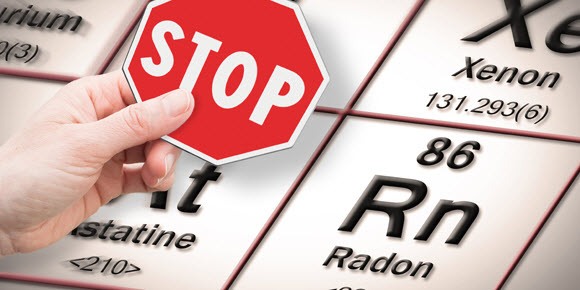A widower is urging Canadian homeowners to protect themselves against deadly radon gas.
“I wish we knew years ago about the risk of lung cancer from radon exposure,” said Mark Nielsen, whose wife was diagnosed with lung cancer just after their family dog was also found to have lung cancer.
“I want to share our family’s story so that other people will take action now before it is too late. My doctor told me about radon and when we tested our home we found the level was over the (Health Canada) guideline. I hope that everyone will test their home and fix it if necessary.”
Mark’s wife, Lori, passed away on January 22, one week before their 28th anniversary and three weeks before their grandson was born.
Radon gas is not something we hear about every day in Canada, however, radon exposure is a leading cause of lung cancer — second only to smoking.
Radon is a radioactive gas present in the soil and rocks around and beneath your home. Radon gas enters your home through cracks and gaps in floors and walls.
“Radon is a silent killer in Canadian homes,”said Mike Holmes Jr., home renovation expert, television personality and prominent radon awareness campaigner.
“What’s shocking is that so many people who know they are living with dangerous levels of radon do nothing to fix the problem. The good news is that if a radon test confirms your house is contaminated, fixing the problem is not only easy but also relatively inexpensive.”
The cost to fix depends on the size of the home and the mitigation system required. The average mitigation installation takes less than a day and can cost between $2,000 and $3,000.
Radon can be an issue in all types of homes: new or old, with finished or unfinished basements, regardless if they’re heavily sealed or drafty. While problems can be more concentrated in some areas of Canada, any home can be at risk.
November is Radon Action Month and stakeholders, who form the national Take Action on Radon network — the Canadian Real Estate Association, NGOs, charities, health and public health organizations, radon professionals, government, builders, academics, retailers, and every province and territory — are encouraging Canadians to take action on radon.
To encourage more Canadians to test and mitigate their homes, Take Action on Radon (TAOR) is announcing a new Radon Reduction Sweepstakes. TAOR and the Canadian Association of Radon Scientists and Technologists (CARST) have partnered to offer a total of $10,000 for a National Radon Reduction Sweepstakes. The sweepstakes is intended to reward homeowners who have tested their home for radon and taken action to reduce levels to below the Canadian Radon guideline level.
Homeowners have a chance to receive a rebate of up to $1,000 towards the cost of the radon reduction method in their home. There will be 10 draws, each worth up to $1,000 with two prizes awarded per region.
In Canada, long-term exposure to radon causes around 2,000 deaths every year.
Radon is measured in units called “becquerels per cubic meter (Bq/m3),” and the Canadian government’s guideline for radon in indoor air is 200 Bq/m3.
If your test’s result is above 200 Bq/m3, then you need to take action, but there’s no need to panic. Because health risks occur only after long-term exposure, Health Canada provides timelines for homeowners to remedy a radon problem.
If your home’s radon levels are between 200 to 600 Bq/m3, then you should remediate your home to lower the radon level below the guideline within two years. If your home’s radon concentration is above 600 Bq/m3, then look to remedy that within a year.
It is estimated that between 10 and 30 per cent of Winnipeg homes may have radon levels surpassing 200 Bq/m3.
Knowing the risks of radon and testing your home for radon will go a long way towards ensuring a safe home for you and your family.
There is a wealth of information about radon on Health Canada’s website at www.canada.ca/radon
— with reports from Canada News, Canada Newswire, the Canadian Real Estate Association and the Ontario Lung Association.



